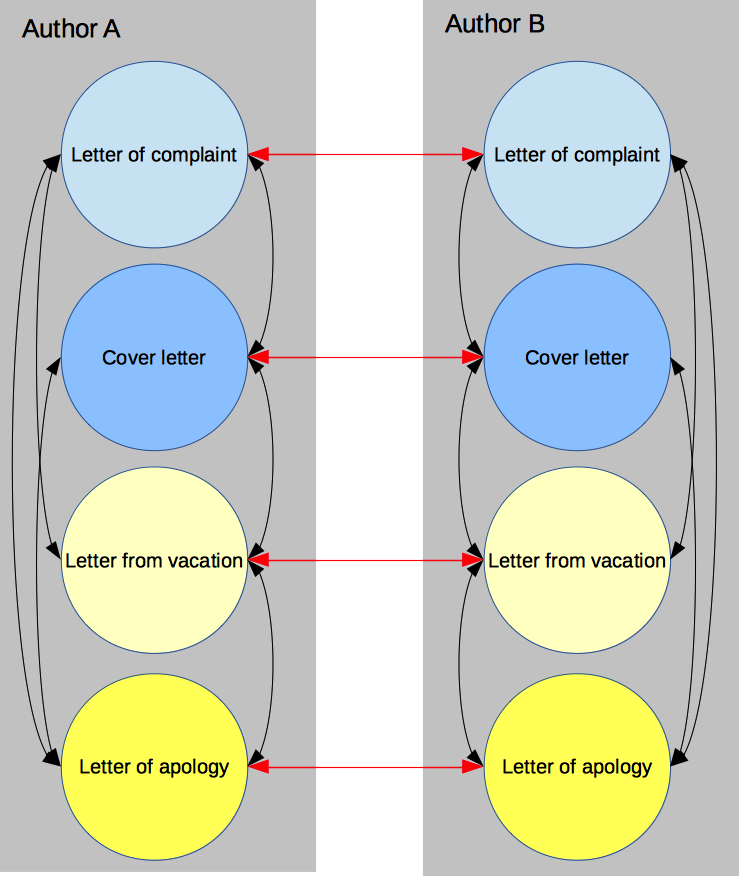Register versus idiolect variation
Václav Cvrček
Zuzana Komrsková
David Lukeš
Petra Poukarová
Anna Řehořková
Adrian Jan Zasina
24th September 2018
Introduction
MDA framework
- language variability can be caused by several different phenomena, e.g.
- register
- author/speaker
- MD model based on the Koditex corpus
- 8 dimensions
- explains 56% of variability
- position of a text in 8D space
Research questions
How can the MD model help:
- in analyzing elicited data?
- in quantifying differences between elicitation scenarios?
- in analyzing register versus idiolect variation?
CPACT data
Speakers
data collected within CPACT project (GA ČR 16-19087S, D. Kučera)
- 200 native speakers of Czech
- proportionate stratified sampling
- selected according to the criteria of age (15–24, 25–34, 35–55 and 55+), gender, highest achieved level of education
- rich psychological metadata – results from several psychological tests, e.g. Big Five personality traits (extraversion, conscientiousness, openness to experience, agreeableness, neuroticism), DASS 21 (Depression, Anxiety, Stress Scale) etc.
Texts
- each participant wrote 4 texts within one day
- requirements:
- length: 180–200 words
- form: letter
- follow task scenario
- scenarios describe situational setting + motivation
defined by 2 criteria, formality and interpersonal stance:
Informal Formal Dominant Letter from vacation Letter of complaint Submissive Letter of apology Cover letter - analysis – same set of features as used in original MDA
results projected onto original MD model
Register variability of elicited texts
Validity of elicited texts
- psychologically oriented analyses of linguistic behavior often based on texts elicited through carefully devised scenarios (e.g. Knapp, et al., 1974; Fisher, 1993; Newman, et al., 2003)
- advantages: controlled environment, diversity of scenarios \(\Rightarrow\) diversity of elicited data
- Are there systematic differences between texts elicited by different scenarios?
- How to design scenarios to be meaningfully distinct in terms of the language they elicit?
- Which scenarios contribute to the diversity of the resulting material?
Elicited texts in 4 dimensions

Differences between scenarios
- position of elicited texts (CPACT) corresponds to similar non-elicited texts (Koditex)
- each task = specific situation, setting
- formal tasks (cover letter, letter of complaint): large overlap in the MD model
- letter from vacation: greatest within-task variability
- scenarios differ in “degrees of freedom” given to author
- the more rigid and highly conventionalized a type of text is, the less room for individual variability
Register versus idiolect
Motivation and overview
CPACT data:
- a unique opportunity to study the interference of idiolect
- approximations:
- idiolect = 200 speakers – balanced stratified sampling
- register = 4 scenarios (tasks) – situation (formality), context (stance)
- all texts are letters – the difference between scenarios should be subtle (!)
Methods
- Statistical modeling:
- ANOVA – effect size (\(\eta\))
- Kruskal-Wallis test – effect size (\(E_{R}^2\))
- Linear Mixed-effects models (LMER) – coefficient of determination (\(R^2\))
- Intuitive approach:
- determining average distance in MD space
Results – statistical models
Surprisingly (?) similar results:

Results – statistical models
Proportion of variation accounted for by task and author in all dimensions (weighted with regards to the “importance” of individual dimensions):
| Method | wAverage.Task | wAverage.Author |
|---|---|---|
| ANOVA | 0.6119 | 0.3881 |
| Kruskal-Wallis | 0.6279 | 0.3721 |
| LMER | 0.7273 | 0.2727 |
Intuitive approach: distances between texts
Same author (black) vs. identical register (red)

Results – distances
Central tendency and spread of distances:
| group | mean | median | sd | mad |
|---|---|---|---|---|
| same_auth | 1.460 | 1.418 | 0.539 | 0.546 |
| same_task | 1.096 | 1.048 | 0.375 | 0.359 |
This is in agreement with the statistical models:
- texts of one author differ more than texts based on one scenario
- → scenario (task) is a better predictor of position within MD space
Conclusions
Conclusions
- an MD model can help in assessing the ecological validity of elicited texts
- are they what/where we expected them to be?
- projecting elicited data onto the MD model can reveal key differences (or overlaps) between scenarios
- controlled settings of CPACT data allow for the combined study of idiolect and register variation
References
- Bermel, N. (2014): Czech Diglossia: Dismantling or Dissolution? In J. Árokay et al. (eds), Divided Languages? Springer.
- Biber, D. (1991): Variation across speech and writing. Cambridge: Cambridge University Press
- Biber, B. & Conrad, S. (2009): Register, Genre, and Style. New York, NY: Cambridge University Press.
- Cvrček, V. & Chlumská, L. (2015): Simplification in translated Czech: a new approach to type-token ratio. Russian linguistics 39/3, (p. 309–325).
- Fisher, R. J. (1993). Social Desirability Bias and the Validity of Indirect Questioning. Journal of Consumer Research 20(2), (p. 303–315).
- Knapp, M. L., Hart, R. P., & Dennis, H. S. (1974). An Exploration of Deception as a Communication Construct. Human Communication Research 1(1), (p. 15–29).
- Newman, M. L., Pennebaker, J. W., Berry, D. S., & Richards, J. M. (2003). Lying words: predicting deception from linguistic styles. Personality & Social Psychology Bulletin 29(5), (p. 665–675).
- Popescu, I., Best, K. & Altmann, G. (2007): On the dynamics of word classes in texts. Glottometrics 14, (p. 58–71).
Acknowledgments
This research was supported by:
- the ERDF project Language Variation in the CNC no. CZ.02.1.01/0.0/0.0/16_013/0001758,
- and the CPACT research project funded by the Czech Science Foundation, grant nr. GA ČR 16-19087S.
It builds upon work made possible by the Czech National Corpus project (LM2015044) funded by MEYS within the framework of Large RDI Infrastructures.
